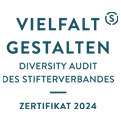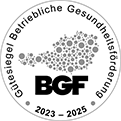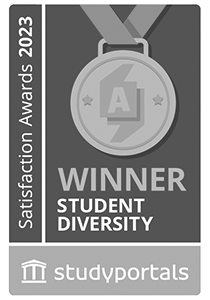Neurodiversity: April 2 – World Autism Awareness Day
What is Neurodiversity?
2 April is World Autism Awareness Day. People on the autism spectrum, as well as people with ADHD, dyscalculia or dyslexia, fall under the broad term of neurodiversity. Neurodiversity refers to the natural spectrum of neurological differences between people. The term assumes that there is no ‘right’ or ‘wrong’ way for the brain to function. Different ways of perceiving and thinking are part of human diversity. Behaviours associated with neurodiversity, which for example become apparent in social interactions or when completing tasks, are often interpreted as unconventional – especially if they do not correspond to neurotypical expectations.
What does neurotypical mean?
The neurological status of neurotypical people is regarded as the societal norm.
The broad spectrum of neurodiversity is evident in everyday university life:
- in collaboration (different preferences in the context of group work),
- when solving tasks (many people on the autism spectrum prefer written examination modes, for example),
- in communication (preferences vary between phone calls or written, direct or indirect)
- or when dealing with challenges (stress or noise are perceived very differently in terms of intensity or impact).
What can I do to make the university more inclusive?
In order to be able to meet and promote neurodiversity, there are various ways in which you can respond to individually varying needs in the best possible way. One example of this is the creation of needs-orientated framework conditions. Measures for a neurodiversity-conscious university (e.g. offers such as quiet rooms or an examination mix) benefit all students, including neurotypical students.
Students and colleagues can:
- ask about preferred modes of communication (written or verbal, direct or indirect, etc.),
- recognise that there are different ways of behaving,
- show patience and allow sufficient time to process information,
- accept and support individual or untypical coping strategies.
Teaching staff can:
- carry out an (anonymised) needs assessment at the beginning of their course,
- ensure that the room is quiet and plan sufficient breaks,
- allow the use of aids such as headphones, noise protection or sunglasses,
- allow alternative partial performances and different examination settings.
These measures promote a respectful and supportive approach to neurodiverse people, leading to a more inclusive working and learning environment in which everyone can realise their full potential.
Further information:
Gillespie-Lynch, K., et al. (2017). “For a Long Time Our Voices Have Been Hushed.” Using Student Perspectives to Develop Supports for Neurodiverse College Students. In: Frontiers in psychology 8. https://www.frontiersin.org/journals/psychology/articles/10.3389/fpsyg.2017.00544/full.
Wilson, K., & Dallman, A. (2024). Strategies for promoting neurodiversity and autism acceptance in higher education. In: Journal of Diversity in Higher Education. https://psycnet.apa.org/record/2024-42936-001.
With the campaign “Youniversity: Celebrating diversity. Living respect.” the Equal Opportunities Working Group (AKG) of the University of Klagenfurt will focus on various diversity topics throughout the next two semesters. You can find more information on the campaign website.













